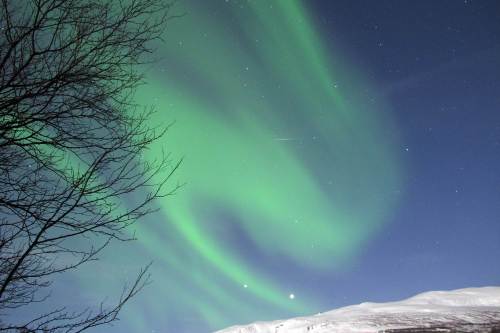
A space weather storm that was forecast to be the strongest in five years has fizzled out and ended up causing no impact to power grids or modern navigation systems, US experts said on Thursday.
A series of eruptions on the Sun this week sent radiation and solar plasma hurtling toward Earth at high speeds but in the end, the geomagnetic storm registered the lowest level, G1, on a five-step scale.
"Our forecasters really struggled with this," said National Oceanic and Atmospheric Administration scientist Joseph Kunches.
He compared the bungled prediction to watching a pitcher toss a baseball but knowing nothing else until it reaches the catcher.
"We missed the spin on the ball," said Kunches.
NOAA had forecast the storm would be a level three, or "strong," and said it would be the worst since 2006. NASA had said it might even be "severe."
In this case, the "spin" that forecasters missed was contained in the orientation of the magnetic field inside the coronal mass ejection from the Sun that raced toward Earth and arrived early Thursday after a 34-hour journey.
"It is very difficult for forecasters, literally almost impossible, as you watch the coronal mass ejection come off the Sun to be able to predict the orientation of that embedded magnetic field," he said.
"It's like if you were a hurricane forecaster and you didn't know the barometric pressure at the eye of the storm."
Kunches said there were no reports of GPS disruption, no reports of problems in terms of electric power, and that any displays of the northern lights, or aurora borealis, would be visible further north than NOAA initially said.
However, the impacts could worsen over the next 24 hours as the storm continues, he said.
NOAA and NASA had warned on Wednesday that the storm could garble global positioning systems, satellites and power grids, and had already caused some air carriers to change their planes' polar flight paths.
Astronauts aboard the International Space Station were not affected by the radiation storm, NASA said.
Geomagnetic and radiation storms are growing more frequent as the Sun leaves its solar minimum period and moves into a solar maximum over the coming years, but people are generally protected by Earth's magnetic field.
However, some experts are concerned that because the world is more reliant on GPS and satellite technology now than it was during the last solar maximum, more disruptions to modern life are likely.
The fuss began late Sunday at an active region on the Sun known as 1429, with a big solar flare that was associated with a coronal mass ejection that thrust toward the Earth at some four million miles (6.4 million kilometers) per hour).
A pair of solar flares and a CME followed overnight Tuesday-Wednesday.
NASA said the first of the two flares on March 6-7 -- classified in the potent X class and facing directly at the Earth -- was the biggest this year and one of the largest of this cycle known as the solar minimum, which began in early 2007.
In fact, it was second only to a stronger one that erupted in August.
The solar flares alone caused brief high frequency radio blackouts that have already passed, according to NOAA.
But while solar radiation storm registered a level 3, the geomagnetic storm ended up being the same minor level as a similar event in January, Kunches said, adding that forecasters were doing their best to balance the need to alert people with the realization that their forecasts may set off false alarms.
"How do you give good information to users to safeguard them and allow them to take precautionary actions, knowing in fact that it might not turn out to be as bad as one might think?" he asked.
"We really worry about crying wolf."(AFP)
<한글 기사>
강력 태양폭풍, 급속 약화돼 피해 없어
지구의 전자기망과 항공교통에 큰 타격을 줄 것으로 예상된 태양폭풍이 8일 지구에 도달했으나 급격히 약화돼 피해가 없었다고 미국 전 문가들이 밝혔다.
이들은 이번 태양폭풍이 지구에 강력한 초고속 방사에너지와 태양 플라즈마를 방출했으나 그 세력이 약해져 지구송전망과 인공위성 및 태양풍의 영향을 받는 각종 기술 제품에 문제가 보고되지 않았다고 전했다.
이 태양폭풍은 이번주 태양 표면에서 일어난 일련의 강력한 연쇄폭발로 발생했 으나 지구에 미친 영향이 5단계 지구 자기장 폭풍 중 가장 약한 G1 수준에 그쳤다.
당초 미국 해양대기국(NOAA)은 이번 태양폭풍으로 인한 지구 자기장 폭풍이 3단 계나 "강력" 수준이 될 것으로 전망하면서 그 위력이 2006년 이후 최고가 될 것으로 예상했다. 미국 항공우주국(NASA)도 "심각한" 수준이 될 것으로 전망했다.
해양대기국 전문가 조 쿤치스는 태양폭풍의 위력을 예상하기는 "매우 어려우며 거의 불가능하다고 할 수 있을 정도"라면서 다만 이번 태양폭풍이 9일까지 계속되는 만큼 후반부에 강해질 수도 있다고 주의를 당부했다.



















